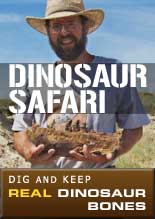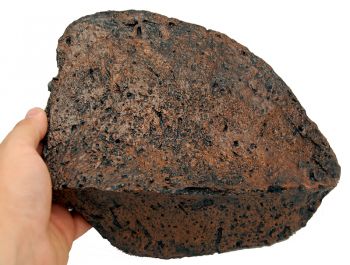
Ankylosaurus was a large animal by modern standards, estimated at lengths of 30 feet and weighing up to 6 tones. However, following a significant redescription of the fossils in 2004, a much smaller size has been suggested, based on the largest known skull, at 64.5 cm (25.4 inches) long and 74.5 cm (29.3 inches) wide, the whole animal was estimated at 6.25 m (20.5 feet) long, 1.5m (4.9 feet) wide and 1.7 m (5.6 feet) tall at the hip. The body shape was low-slung and quite wide. It was quadrupedal, with the hind limbs longer than the forelimbs. Although its feet are still unknown, comparisons with other ankylosaurs suggest Ankylosaurus probably had five toes on each foot. The skull was low and triangular in shape, wider than it was long. Like other ankylosaurs, Ankylosaurus was herbivorous, with small, leaf-shaped teeth suitable for cropping vegetation. These teeth were smaller, relative to the body size, than in any other ankylosaurid species. Ankylosaurus did not share the grinding tooth batteries of the contemporaneous ceratopsid and hadrosaurid dinosaurs, indicating that very little chewing occurred. Bones in the skull and other parts of the body were fused, increasing their strength.
The most obvious feature of Ankylosaurus is its armor, consisting of massive knobs and plates of bone, known as osteoderms or scutes, embedded in the skin. Osteoderms are also found in the skin of crocodiles, armadillos and some lizards. The bone was probably overlain by a tough, horny layer of keratin. These osteoderms ranged greatly in size, from wide, flat plates to small, round nodules. The plates were aligned in regular horizontal rows down the animals neck, back, and hips, with the many smaller nodules protecting the areas between the large plates. Smaller plates may have been arranged on the limbs and tail. Compared to the slightly more ancient ankylosaurid Euoplocephalus, the plates of Ankylosaurus were smooth in texture, without the high keels found on the armor of the contemporaneous nodosaurid Edmontonia. A row of flat, triangular spikes may have protruded laterally along each side of the tail. Tough, rounded scales protected the top of the skull, while four large pyramidal horns projected outwards from its rear corners.
The famous tail club of Ankylosaurus was also composed of several large osteoderms, which were fused to the last few tail vertebrae. It was heavy and supported by the last seven tail vertebrae, which interlocked to form a stiff rod at the base of the club. Thick tendons have been preserved, which attached to these vertebrae. These tendons were partially ossified (or bony) and were not very elastic, allowing great force to be transmitted to the end of the tail when it was swung. It seems to have been an active defensive weapon, capable of producing enough of a devastating impact to break the bones of an assailant. A 2009 study showed that large tail knobs could generate sufficient force to break bone during impacts, but average and small knobs could not", and that tail swinging behavior is feasible in ankylosaurids, but it remains unknown whether the tail was used for interspecific defense, intraspecific combat, or both. It has also been proposed that the tail club acted as a decoy for the head, although this idea is now largely discredited.
resin
10 x 8.5 x 3 inches
Item 3054
Category: Replicas
Type: Bones
Phylum: Vertebrates
Class: Dinosaurs
MORE PHOTOS:
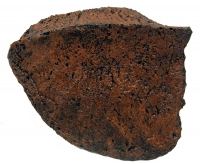
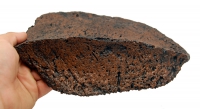
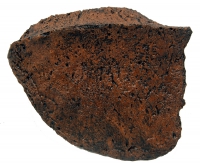
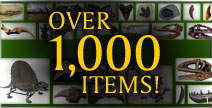
Now Over 1,000 Items!
PrehistoricStore.com offers the largest selection of replica fossils and other fossil-related products anywhere in the world!
Download a Full Catalog (3MB PDF)
OVER 260 PAGES OF REPLICAS AND MORE!
